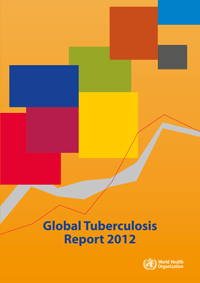The World Health Organization released the new 2012 World TB report today. There is a lot of interesting data to be found, but it summarizes easily: We’re making progress against Tuberculosis, but not enough. We’re doing a good job of reducing the global burden of TB. Our failure is with drug resistance. Multiple drug resistant TB (MDR TB) continues to rise, and we’re barely treating 20% of the people who have it.
There were 8.7 million new cases of Tuberculosis in 2011. (That’s about the population of New Jersey.) 1.4 million people died from TB in 2011; half a million of them were women. However, says Dr. Mario Raviglione, Director of the WHO Stop TB program, anti-TB strategies are working. “In the space of 17 years, 51 million people have been successfully treated and cared for according to WHO recommendations. Without that treatment, 20 million people would have died.”
In other good news, the report finds reduced rates of new disease and deaths in all of WHO’s six regions, although the African and European regions are unlikely to meet the TB Millennium Development Goal of halving 1990’s numbers by 2015. WHO’s Africa region is plagued by low levels of funding and underdeveloped health systems. WHO Europe region contains most of the former USSR, all of which struggle to move away from outdated Soviet treatment models for TB.
The numbers don’t get really ugly until it comes to MDR TB. The number of notified cases of MDR TB in the high TB burden countries is on the rise, and it’s a fraction of the true number of cases. In most countries, the estimate is that 1 in 5 cases of MDR TB are notified; that falls to 1 in 10 in India and China. Globally, 3.7% of new cases of TB and 20% of previously treated cases were estimated to have MDR-TB. That 3.7% number is especially devastating – these are people who have never been treated for Tuberculosis before, yet their infections resist standard TB treatment.
In response to the report data, the WHO is calling for more funds for TB research and treatment. They have identified a US $1.4 billion funding gap for research, and a US$ 3 billion per year funding shortfall between 2013 and 2015. If that need is not met, “This gap threatens to hold back delivery of TB care to patients and weaken measures that prevent and control the spread of TB, with low-income countries at most risk,” says Dr. Katherine Floyd, who coordinated the report team.
